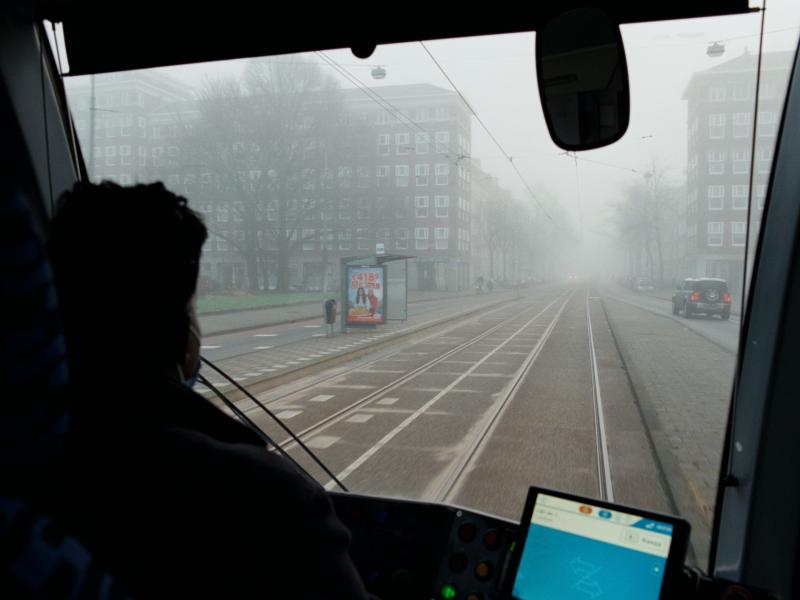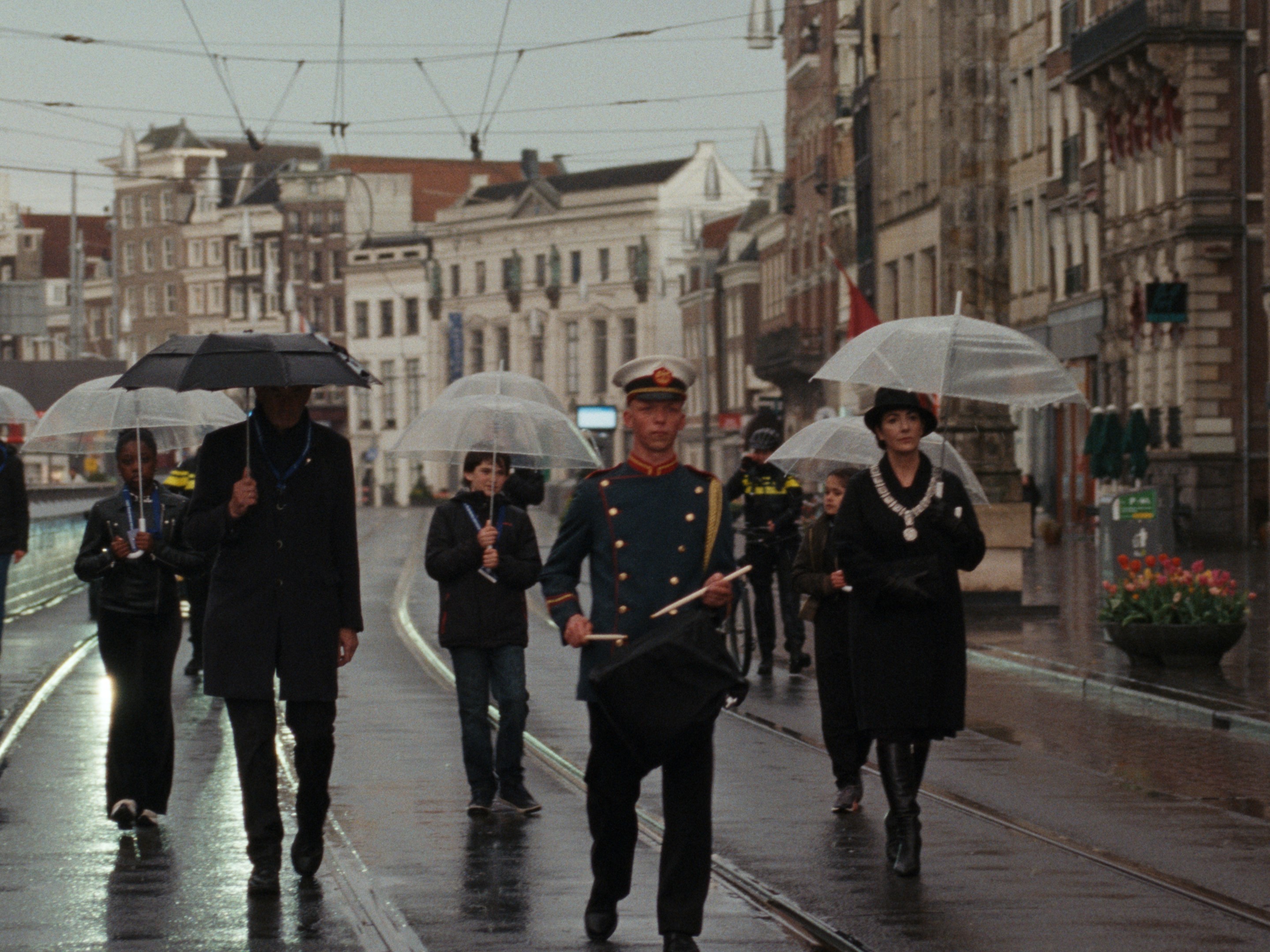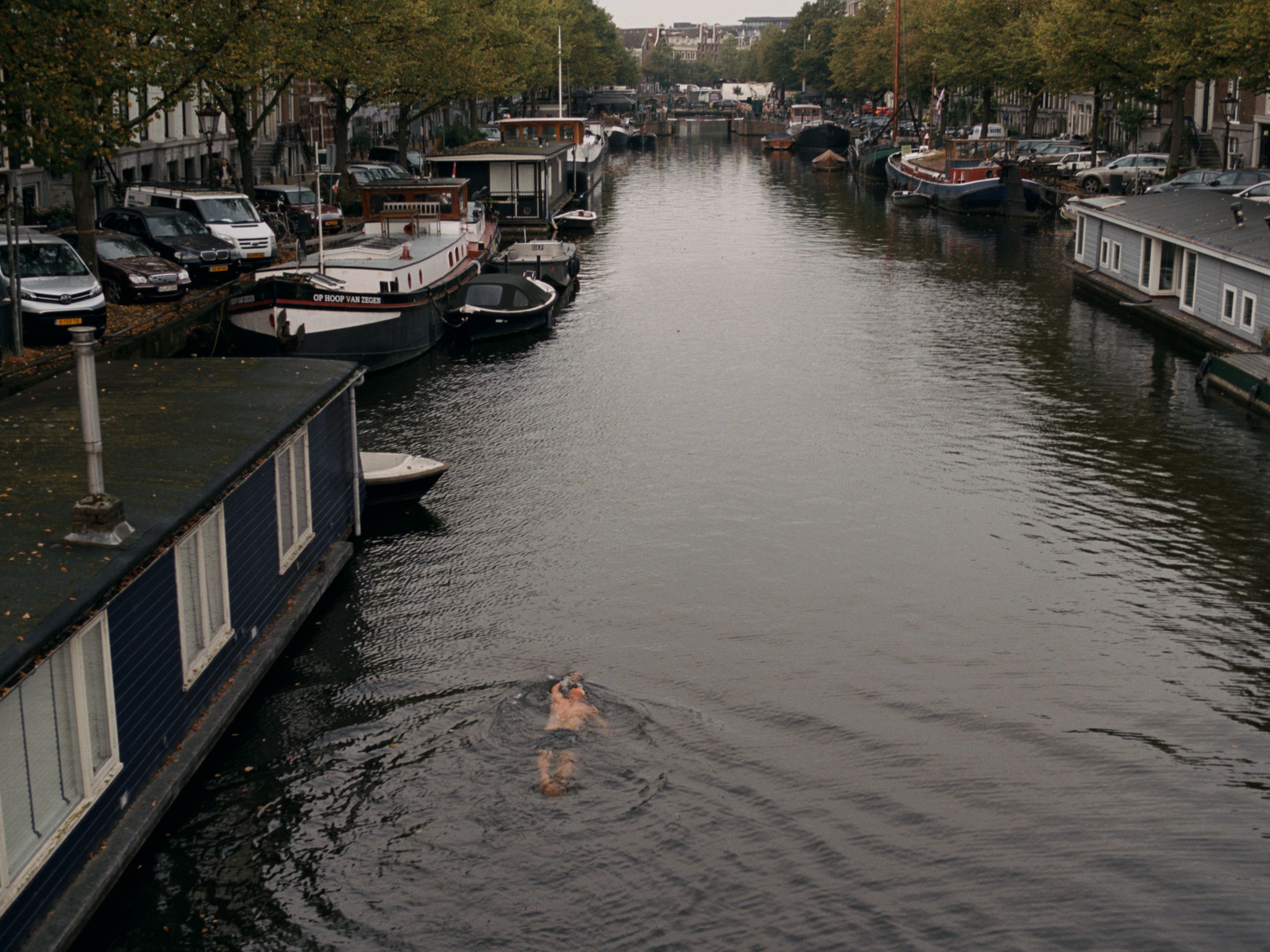Occupied City review - unquiet Nazi crimes | reviews, news & interviews
Occupied City review - unquiet Nazi crimes
Occupied City review - unquiet Nazi crimes
Steve McQueen’s cool double-portrait of Amsterdam trauma

“I feel as if I am live reporting from a shipwreck,” Dutch-Jewish journalist Philip Mechanicus wrote en route to his concentration camp murder. Steve McQueen’s four-hour reverie on Amsterdam’s Nazi occupation teases out the scars of that arbitrary, vicious time beneath his adopted home’s placid streets. Filming during 2020’s pandemic, this becomes a time-jumping double-portrait of his adopted home city, though the inexact mirroring often cracks.
McQueen’s Dutch wife Bianca Sitgers’ book Atlas of an Occupied City (Amsterdam 1940-1945) led him to visit its addresses and use her text, which flatly reconstructs a sadistic system: a nurse smuggles Jews to safety, so “the Germans shot her, and threw her body in the canal”. The Holocaust festers at Amsterdam’s heart. Jewish life was incrementally constricted and a protesting general strike put down, preparing the ground for 1942’s deportations, where Dutch Jews died in Europe’s highest proportion. But this is only the central part of a traumatised nervous system of resistance, collaboration, random killings, secret lives and starvation which was wired into Amsterdam’s quaint avenues. There, McQueen contends, it remains. The director’s characteristically gorgeous, 35mm compositions catch summer light and neon dark in angled, hyper-real footage which should suggest the lived Forties present. In fact, even when buildings are the same, it’s hard to find the buried past beneath this polished surface. The profound dislocation of Christian Petzold’s Transit (2018), a modern-dress adaptation of a Forties novel of refugees fleeing fascism, and Paul Verhoeven’s vividly visceral Black Book (2006), from a director who recalls the occupation, aren’t attempted by this often static, long-shot approach.
The director’s characteristically gorgeous, 35mm compositions catch summer light and neon dark in angled, hyper-real footage which should suggest the lived Forties present. In fact, even when buildings are the same, it’s hard to find the buried past beneath this polished surface. The profound dislocation of Christian Petzold’s Transit (2018), a modern-dress adaptation of a Forties novel of refugees fleeing fascism, and Paul Verhoeven’s vividly visceral Black Book (2006), from a director who recalls the occupation, aren’t attempted by this often static, long-shot approach.
It’s mostly in ordinary upstairs flats that eerie simultaneity grips. Where a middle-aged man murmurs to his cat on their sofa, 21 Jews hid, sleeping cramped on the floor, enforced intimacy leading to sex under death’s suffocating shadow: “Necessity,” one wrote, “knows no law.” A scientist’s bookshelves sit where a Jewish cancer researcher continued his work for the Nazis, wife hostage, children murdered. A school full of happy, liberally educated children had a torture chamber basement. At another, segregated for Jews till its classes ebbed to the camps, a current child’s scream ends the scene.
While Sitgers’ text builds its case, McQueen’s mind wanders into the city during its Covid summer. He simply revels in the empty streets, spinning and inverting the camera in an abstract urban montage, finding magical grace in the vacated city. Supernal relief was found too in 1944’s Hunger Winter, when 20,000 Dutch starved to death, as a diary recalls “ghostly” candlelit music stands in an otherwise dark, freezing church concert. “So, this other world did still exist,” the writer discovers, clinging to it. McQueen’s apparent parallelling of Nazi crackdowns and Dutch police moving in on lockdown protests, as curfews are brought in for the first time since the war, is more dubious, especially given the conspiratorial fascism such crowds promote. But Small Axe’s director may see police water-cannon and cavalry charges less equably than some, and anti-racist and environmental rallies are also part of his Amsterdam. Fascism is resurgent, and its suppressed ghosts are not quiet.
McQueen’s apparent parallelling of Nazi crackdowns and Dutch police moving in on lockdown protests, as curfews are brought in for the first time since the war, is more dubious, especially given the conspiratorial fascism such crowds promote. But Small Axe’s director may see police water-cannon and cavalry charges less equably than some, and anti-racist and environmental rallies are also part of his Amsterdam. Fascism is resurgent, and its suppressed ghosts are not quiet.
While forensically reconstructing a Nazi crime scene, McQueen is also curiously discovering his wife’s city, watching young black kids contemplating Covid news on their phones, and a young woman cycling through a sun-sparked insect cloud. This dilutes Forties horror already spread coolly thin, but has its own value.
A last scene of a mixed-race boy’s bar mitzvah and sprint out of his synagogue’s golden doors is intensely moving proof of Dutch Jewry’s narrow survival, and wide open, unfinished future.
rating
Share this article
more Film
 theartsdesk Q&A: Marco Bellocchio - the last maestro
Italian cinema's vigorous grand old man discusses Kidnapped, conversion, anarchy and faith in cinema
theartsdesk Q&A: Marco Bellocchio - the last maestro
Italian cinema's vigorous grand old man discusses Kidnapped, conversion, anarchy and faith in cinema
 I.S.S. review - sci-fi with a sting in the tail
The imperilled space station isn't the worst place to be
I.S.S. review - sci-fi with a sting in the tail
The imperilled space station isn't the worst place to be
 That They May Face The Rising Sun review - lyrical adaptation of John McGahern's novel
Pat Collins extracts the magic of country life in the west of Ireland in his third feature film
That They May Face The Rising Sun review - lyrical adaptation of John McGahern's novel
Pat Collins extracts the magic of country life in the west of Ireland in his third feature film
 Stephen review - a breathtakingly good first feature by a multi-media artist
Melanie Manchot's debut is strikingly intelligent and compelling
Stephen review - a breathtakingly good first feature by a multi-media artist
Melanie Manchot's debut is strikingly intelligent and compelling
 DVD/Blu-Ray: Priscilla
The disc extras smartly contextualise Sofia Coppola's eighth feature
DVD/Blu-Ray: Priscilla
The disc extras smartly contextualise Sofia Coppola's eighth feature
 Fantastic Machine review - photography's story from one camera to 45 billion
Love it or hate it, the photographic image has ensnared us all
Fantastic Machine review - photography's story from one camera to 45 billion
Love it or hate it, the photographic image has ensnared us all
 All You Need Is Death review - a future folk horror classic
Irish folkies seek a cursed ancient song in Paul Duane's impressive fiction debut
All You Need Is Death review - a future folk horror classic
Irish folkies seek a cursed ancient song in Paul Duane's impressive fiction debut
 If Only I Could Hibernate review - kids in grinding poverty in Ulaanbaatar
Mongolian director Zoljargal Purevdash's compelling debut
If Only I Could Hibernate review - kids in grinding poverty in Ulaanbaatar
Mongolian director Zoljargal Purevdash's compelling debut
 The Book of Clarence review - larky jaunt through biblical epic territory
LaKeith Stanfield is impressively watchable as the Messiah's near-neighbour
The Book of Clarence review - larky jaunt through biblical epic territory
LaKeith Stanfield is impressively watchable as the Messiah's near-neighbour
 Back to Black review - rock biopic with a loving but soft touch
Marisa Abela evokes the genius of Amy Winehouse, with a few warts minimised
Back to Black review - rock biopic with a loving but soft touch
Marisa Abela evokes the genius of Amy Winehouse, with a few warts minimised
 Civil War review - God help America
A horrifying State of the Union address from Alex Garland
Civil War review - God help America
A horrifying State of the Union address from Alex Garland
 The Teachers' Lounge - teacher-pupil relationships under the microscope
Thoughtful, painful meditation on status, crime, and power
The Teachers' Lounge - teacher-pupil relationships under the microscope
Thoughtful, painful meditation on status, crime, and power

Add comment